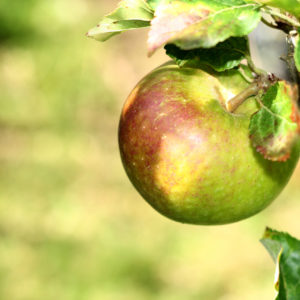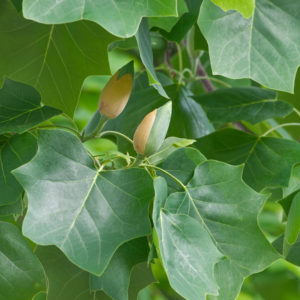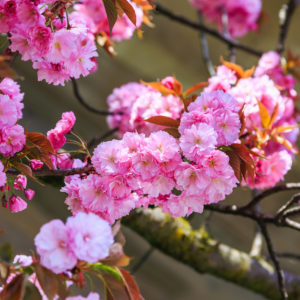Acer campestre Elsrijk
Price range: €210.00 through €780.00
Frequently Bought Together
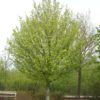

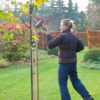
Description
Common Name: Elsrijk Field Maple, Upright Field Maple
Botanical Name: Acer campestre ‘Elsrijk’
Family: Sapindaceae
Origin: Cultivar selection (Dutch origin) of native European species
Mature Height: 10-12 metres
Mature Spread: 5-7 metres
Growth Rate: Moderate (30-40cm per year)
Foliage: Deciduous; five-lobed leaves, fresh green in spring and summer, turning spectacular shades of butter-yellow to golden-orange in autumn
Flowers: Small, greenish-yellow clusters in April-May; inconspicuous but attractive to pollinators
Fruit: Winged seeds (samaras) in autumn, held horizontally in pairs
Soil Requirements: Highly adaptable; thrives in clay, loam, chalk, or sandy soils; tolerates alkaline conditions; prefers well-drained to moist soil
Light Requirements: Full sun to partial shade
Hardiness: Fully hardy; tolerates exposed sites, urban pollution, and compacted soil
Special Features: Outstanding autumn colour; narrow, upright form ideal for restricted spaces; excellent for street planting and formal avenues; native species with high wildlife value; tolerates pollution and challenging urban conditions
Description
‘Elsrijk’ is the Field Maple refined for modern landscapes – a cultivar that takes the best qualities of our native Acer campestre and presents them in a form perfectly suited to contemporary gardens, streets, and formal settings. Selected in the Netherlands for its compact, upright habit, ‘Elsrijk’ develops a narrow, oval crown that remains tight and symmetrical without pruning.
The foliage is classic Field Maple – five-lobed leaves with a soft, rounded outline that create a dense, textured canopy through spring and summer. The fresh green colour provides a calm, restful presence that complements rather than competes with surrounding planting. Small greenish-yellow flowers appear in spring, attracting early pollinators with their subtle nectar offering.
Autumn is when ‘Elsrijk’ reveals its true beauty. The foliage transforms into a spectacular display of butter-yellows and golden-oranges that glow in the low autumn light. The colour is warm and luminous rather than fiery, creating a softer, more sophisticated effect than the reds and scarlets of other maples. The display lasts for several weeks, providing a gentle finale to the growing season.
The narrow, upright form – typically just 5-7 metres wide at maturity – makes ‘Elsrijk’ exceptionally versatile for restricted spaces. It’s perfect for street planting where overhead wires or narrow pavements limit width, formal avenues where symmetry and uniformity matter, or smaller gardens where a traditional Field Maple would eventually overwhelm.
Like its parent species, ‘Elsrijk’ is remarkably tolerant of urban conditions. It thrives in compacted soil, tolerates pollution, and handles alkaline conditions with ease. The bark develops attractive corky ridges with age, adding winter interest and textural detail.
For wildlife, ‘Elsrijk’ offers the same ecological value as the species – flowers feed pollinators, leaves support moth caterpillars, seeds provide autumn food for birds, and the dense canopy offers nesting sites. This is a native tree in a modern package – all the environmental benefits with added architectural discipline.
Caragh Garden Notebook: Caring for Your Acer campestre ‘Elsrijk’
Planting Your Elsrijk Field Maple
Choose a site in full sun or partial shade with reasonably well-drained soil. ‘Elsrijk’ is remarkably adaptable and will thrive in clay, chalk, loam, or sandy conditions. It tolerates alkaline soils particularly well, making it ideal for lime-rich gardens and urban settings.
The narrow form allows planting closer to boundaries and buildings than wider-spreading trees – allow 4-5 metres clearance for the mature spread. This makes ‘Elsrijk’ ideal for smaller gardens, street planting, and formal avenues where space is at a premium.
Dig a planting hole twice the width of the root ball but no deeper. Position the tree so the top of the root ball sits level with the surrounding soil. Backfill with excavated soil, firm gently, and water thoroughly. Stake young trees for the first 2-3 years using a single angled stake and flexible tree tie.
Apply a 5-7cm layer of organic mulch around the base, keeping it clear of the trunk.
Plant bare-root or root-balled specimens from November to March, or container-grown trees year-round (though autumn and spring establishment is preferable).
Watering & Feeding
Water regularly during the first two growing seasons to establish a deep root system. Once established, ‘Elsrijk’ is drought-tolerant and requires minimal supplemental watering except during prolonged dry spells.
Apply a balanced slow-release fertiliser in early spring for the first few years. Mature specimens require no feeding – simply maintain the mulch layer to conserve moisture and suppress weeds.
Pruning & Maintenance
‘Elsrijk’ requires minimal pruning and naturally maintains its compact, upright form. Remove any dead, damaged, or crossing branches in late autumn or winter (November-February) when the tree is fully dormant.
The cultivar’s tight, symmetrical habit means formative pruning is rarely necessary. If any pruning is needed to maintain the central leader or remove competing shoots, do so in winter when the structure is clearly visible.
Check and adjust tree ties regularly during the first few years to prevent rubbing or constriction as the trunk expands.
Seasonal Interest
Winter: Upright architectural form with attractive corky bark on mature specimens; tight, symmetrical branching structure.
Spring: Fresh green leaves unfurl; clusters of greenish-yellow flowers attract early pollinators in April-May.
Summer: Dense canopy of calm green foliage provides cooling shade; narrow, upright form maintains architectural presence.
Autumn: Spectacular transformation to butter-yellow and golden-orange; warm, luminous colour lasts 3-4 weeks; winged seeds add decorative detail.
Companion Planting
The narrow, upright form of ‘Elsrijk’ makes it an excellent companion for layered planting. Underplant with shade-tolerant perennials such as Geranium macrorrhizum, Alchemilla mollis, Epimedium, or Brunnera macrophylla once the canopy develops.
For spring interest, naturalise bulbs – Narcissus, Crocus, Anemone blanda, or Erythronium – beneath the canopy to provide early colour before the tree leafs out fully.
In formal avenues, plant at 8-10 metre intervals to create a uniform, symmetrical effect. The narrow crowns will eventually meet overhead without crowding.
Ornamental grasses such as Calamagrostis or Deschampsia planted at the drip line echo the tree’s upright form whilst adding movement and texture.
Pests & Diseases
Generally healthy and trouble-free. Occasionally affected by aphids in spring (usually not requiring treatment) or tar spot fungus (cosmetic only, does not harm the tree). Good air circulation and avoiding overhead watering help prevent fungal issues.
‘Elsrijk’ shows good resistance to most pests and maintains clean, healthy foliage through the season with minimal intervention.
Why Choose Acer campestre ‘Elsrijk’ from Caragh Nurseries?
Our ‘Elsrijk’ Field Maples are carefully grown to ensure strong root systems, healthy foliage, and the characteristic narrow, upright form. Whether you’re planting a formal avenue, adding vertical accent to a small garden, or seeking a native tree with modern architectural discipline, ‘Elsrijk’ offers beauty, adaptability, and ecological value in a perfectly proportioned package. This is a tree that works hard and looks effortless – the ideal choice for contemporary landscapes and thoughtful planting schemes.



